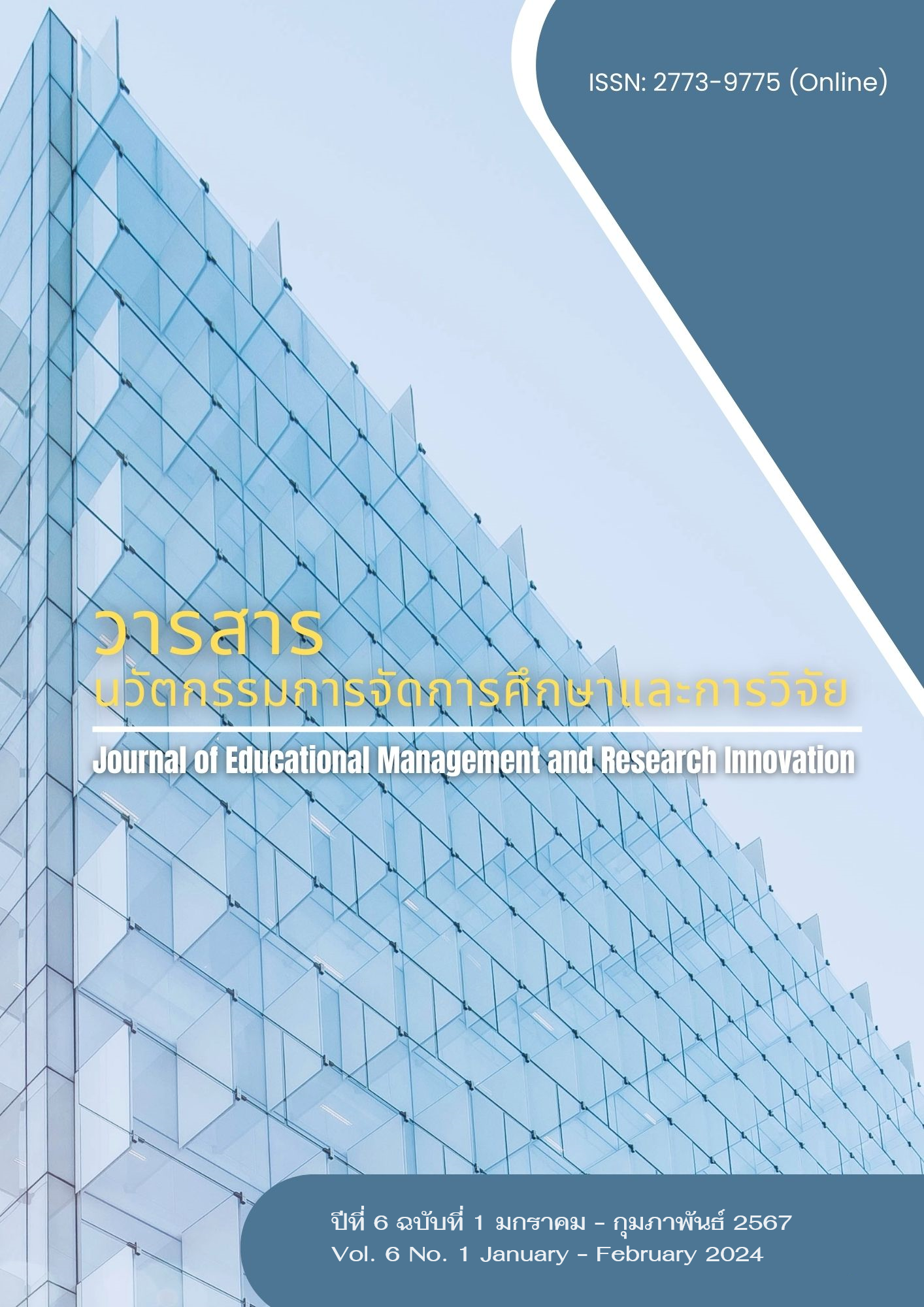Communication Innovations to Promote the Management of Public and Private Organizations in The Digital Era
Main Article Content
Abstract
Communication innovation is a prevalent sort of innovation in modern times. A development paradigm has transitioned from face-to-face communication to digital communication via the internet network, known as digital communication. Digital communication is a streamlined and rapid method of communication utilizing innovative and developing apps. Utilizing these communication advancements in organizational management, whether in a government or private sector setting, can enhance the organization's status to a leading position. These communication advancements can facilitate a streamlined, efficient, and punctual work approach. Currently, numerous new communication innovations are emerging. Organizations may not be able to completely and swiftly learn when they integrate all communication technologies. The organization is at risk. Therefore, organizations that will use communication innovation need to know the elements of communication innovation, which consist of 7 important elements: 1. Communication aim 2. Sender 3. Message 4. Media 5. Receiver 6. Context 7. Evaluate and know the components of media innovation. You still need to grasp the nature of innovation. Know the pros, downsides, and benefits acquired from employing innovations. Through the process of spread of innovation and the process of adoption to use the innovation. Therefore, building an understanding of the innovation diffusion process and the innovation acceptance process. It will foster integration between innovation, communication, and management. This will boost the organization's ability in 5 ways: 1. Increase work efficiency. 2. Increase decision-making efficiency. 3. Increase rapid response 4. Increase teamwork ability. 5. Ready to adjust. change Therefore, if communication innovations are linked effectively and appropriately with the organization, this will raise the organization to an innovative organization.
Article Details

This work is licensed under a Creative Commons Attribution-NonCommercial-NoDerivatives 4.0 International License.
References
กมลรัฐ อินทรทัศน์, ปิยฉัตร ล้อมชวการ และ สราวุฒิ ทองศรีคำ. (2567). นวัตกรรมการสื่อสาร. สืบค้นเมื่อ 20 ธันวาคม 2566, จาก https://smartmooc.org/courses/coursev1:HAPPYU+HAPPYU03+ HAPPYU03/about
การทางพิเศษแห่งประเทศไทย. (2564). วัฒนธรรมองค์กรดิจิทัลของ กทพ. สืบค้นเมื่อ 18 มิถุนาคม 2566, จาก https://gisportal.exat.co.th/exatPortalHosting/document/EXAT_ Digital_Culture.pdf.
กฤษมันต์ วัฒนาณรงค์. (2536). เทคโนโลยีเทคนิคศึกษา. กรุงเทพฯ: มหาวิทยาลัยเทคโนโลยีพระจอมเกล้าพระนครเหนือ.
จอห์นนพดล วศินสุนทร. (2563). กำลังสำรองเป็นกำลังทางยุทธศาสตรของชาติและเป็นพลังอำนาจทางทหารที่มีความสำคัญอย่างยิ่งต่อความมั่นคงของประเทศ. สืบค้นเมื่อ 10 ธันวาคม 2566, จากhttps://johnnopadon.blogspot.com/fbclid=IwAR3kFTxBrprI3ikyAHI4ArBfMCZcbtVEz5O50xDJ2oCbZ8I5dMQmnN2Vc
ธราธร บุ้งทอง, กมล เสวตสมบูรณ์ และละเอียด ศิลาน้อย. (2555). ความสัมพันธ์ระหว่างประสิทธิภาพการสื่อสารภายในองค์กรกับประสิทธิผลการทำงานเป็นทีมของบริษัทนำเที่ยวในกรุงเทพมหานครและปริมณฑล. วารสารวิจัยและพัฒนามหาวิทยาลัยราชภัฏเลย, 7(22), 73-85.
สุทิพย์ ประทุม และ สรัญณี อุเส็นยาง. (2565). การยอมรับเทคโนโลยีสารสนเทศในยุควิถีชีวิตใหม่. วารสารลวะศรี มหาวิทยาลัยราชภัฏเทพสตรี, 6(1), 1-18.
อัศวิน เนตรโพธิ์แก้ว. (2557). นวัตกรรมสื่อสังคมกับประชาคมอคติ. วารสารนิเทศศาสตร์และนวัตกรรม นิด้า, 1(1), 19-32.
Berio, D. K. (1960). The Process of Communication: An Introduction to Theory and Practice. New York: Holt, Rinehart and Winston.
Boonroungrut, C., Saroinsong, W. P., & Thamdee, N. (2022). Research on Students in COVID-19 Pandemic Outbreaks: A Bibliometric Network Analysis. International Journal of Instruction, 15(1), 457-472.
Fayol, H. (1916). General and Industrial Management. Paris: Institute of Electrical and Electronics Engineering.
Kirine, K., Charoenarpornwattana, P. & Leeniwa, J. (2023). Digital Transformation of Human Resource Development. Journal of Information and Learning, 34(3), 154-165.
McQuail, D. (1987). Mass Communication Theory: An Introduction. (2nd ed.). London: Sage Publications.
Rogers, E. M. (1995). Diffusion of Innovations. (4th Ed). New York: Free Press.
Simon, H. (1996). A Public Administration. New York: Alfreod A Kuopf. Tompkins, J. R. (2005). Organization Theory and Public Management. Belmont: Thomson Wadsworth.

